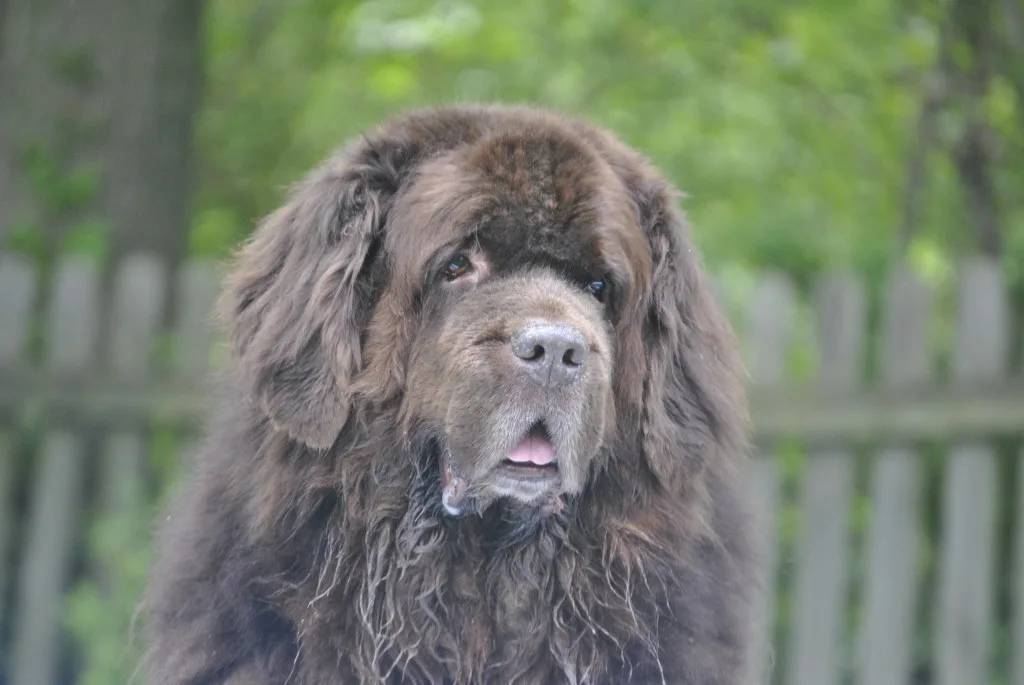
Sherman’s going to be 9 in November. That makes Sherman my oldest living Newfoundland to date.
It’s taken me a little bit to stop wincing when someone asks me how old he is but I’ve decided that’s not the way I want to be answering that question.
I’m proud that Sherman is going to be 11.
He’s an 11-year-old giant breed dog with a torn cruciate and that’s about the extent of his medical issues right now.
He definitely has osteoarthritis (degenerative joint disease) in that knee and a little bit of arthritis in his other knee but we’ve been able to manage that quite effectively over the last 3 years.
Being that Sherman is a giant breed dog, arthritis was expected to enter his life at some point in time but because he tore his right cruciate over 5 years ago, we knew it would present itself a little sooner.
Thankfully, we were able to be proactive in hopes that he would be able to live a relatively pain-free and full life despite the osteoarthritis.
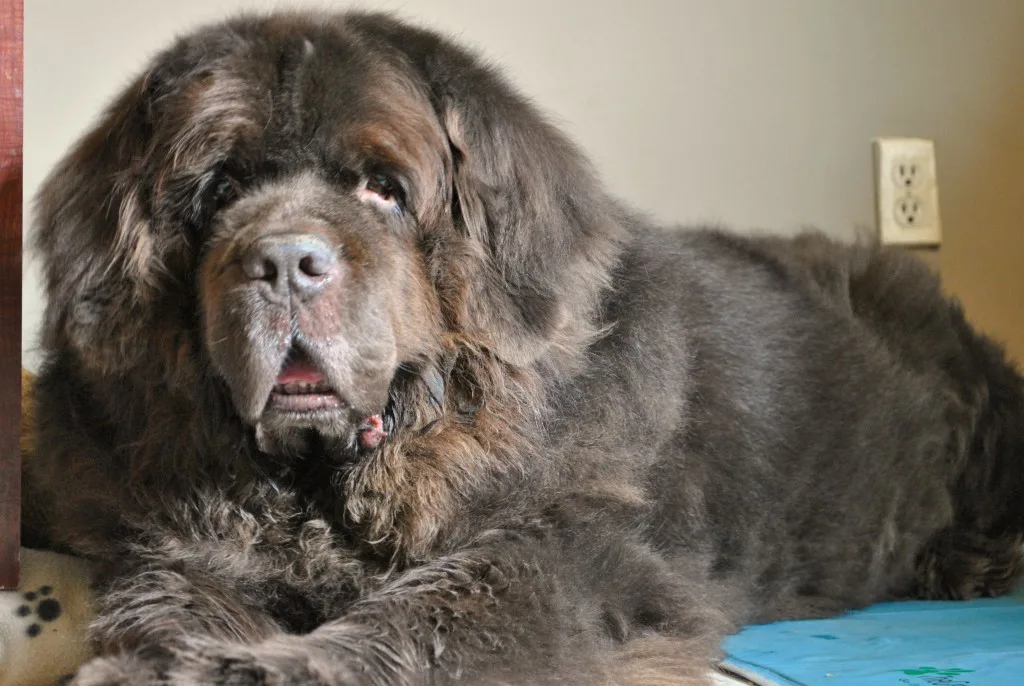
If you remember correctly we chose conservative therapy over surgery to treat Sherman’s torn cruciate.
Conservative therapy is normally not advised in giant breed dogs but we were lucky enough to have good luck with this choice. Good enough luck that one of my main goals was accomplished of Sherman NOT blowing out his left cruciate.
Of course, even though the hydrotherapy and laser therapy was successful, we still needed a long term game plan to keep arthritis from getting worse and taking over his life.
Here are some of the approaches we have taken that have been successful for Sherman so far.
Exercise
I was talking with a fellow a senior Newf owner a few weeks ago.
His dog is a few months older than Sherman and we were talking about how they have slowed down and we both said keeping them moving is key.
What happens if YOU sit around and do nothing for a long period of time? You get stiff. The same goes for senior dogs so keeping them moving is crucial. Sherman doesn’t walk as far he use to but he still goes for walks several times a week.
Hill work has been instrumental in keeping Sherman’s muscle mass intact. He’s lost some muscle but not much.
So in order to keep his muscles, strong Sherman does hill work. It’s not as bad as it sounds. On the side of our driveway, we have a hill that goes from about a foot at the top of the driveway to about 6 feet at the bottom.
A few times a week I walk Sherman up the 1 foot part and walk him down. We move to the 2 foot part and repeat. 3 foot part and repeat. 4 foot part and repeat. It takes less than 5 minutes and it’s helping his back leg muscles and his shoulder muscles.
He has to control his movement when he goes down.
Another exercise we do is the sit to stand.
That’s where Sherman goes from a sit position to a stand position a few times a week. This actually seems harder for Sherman than the hill work. Sit down. Get back up. Repeat 4-5 times. It’s almost like doggie squats.
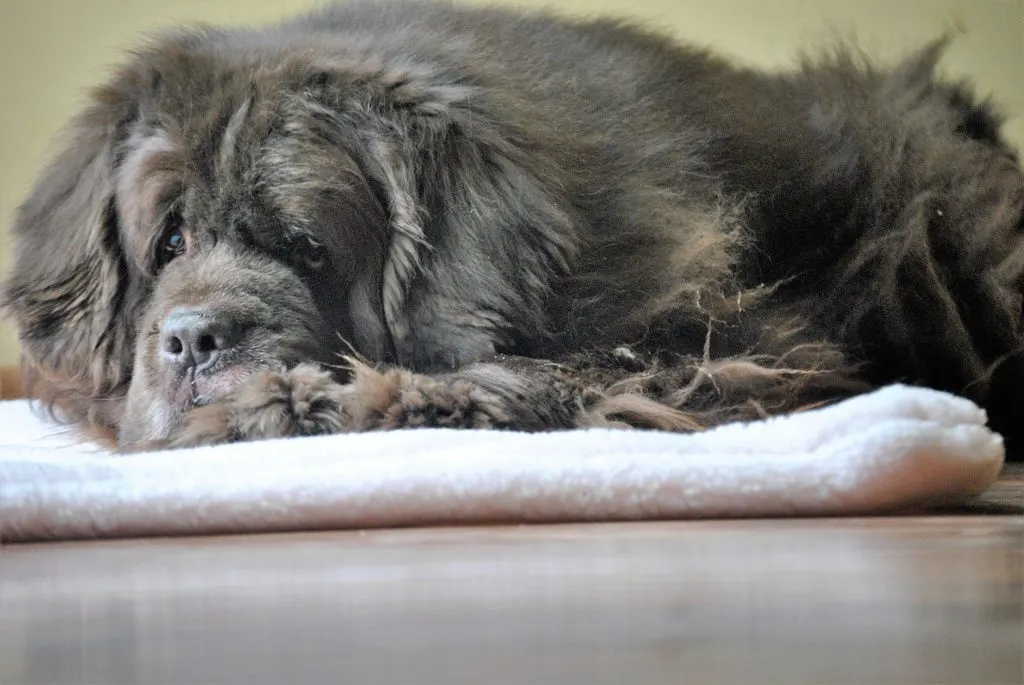
A Good Joint Supplement.
Over the years we tried several joint supplements. I went with the one that was recommended by the top orthopedic specialist in our area and saw no results so we switched and switched again.
We finally settled on one about 2 years ago called Natural Stride Hip & Joint Supplement. It was the only one that I saw a noticeable difference with.
It’s certainly overwhelming to find a joint supplement for your dog with hundreds of them out there and the best advice I can give on that is go with the one that produces results for your dog. If you don’t see results move on.
One thing I really liked about the Natural Stride Hip & Joint Supplement was that it came with a 60-day money-back guarantee.
Massage.
Massaged muscles are looser, which makes it much easier for your pet to move around comfortably.
When I have a kink in my back or my knee is sore, a simple 10 minutes massage from my husband can make a world of a difference.
The same goes for a dog suffering from arthritis. Ask your vet if they can provide you with some massage techniques that could help your dog.
Healthy Weight.
Sherman’s weight tends to fluctuate. He goes up in the summer and down in the winter due to his activity levels.
We’ve learned that we really need to keep his activity level up in the summer months by doing a few more inside activities such as find it, hide and seek and a few more sit to stands.
In the winter months walking through light fluffy snow is ideal for him and we try to get out and do that at least twice a day. This is usually followed by a nice massage. Keeping him at an ideal weight is crucial in managing his osteoarthritis.
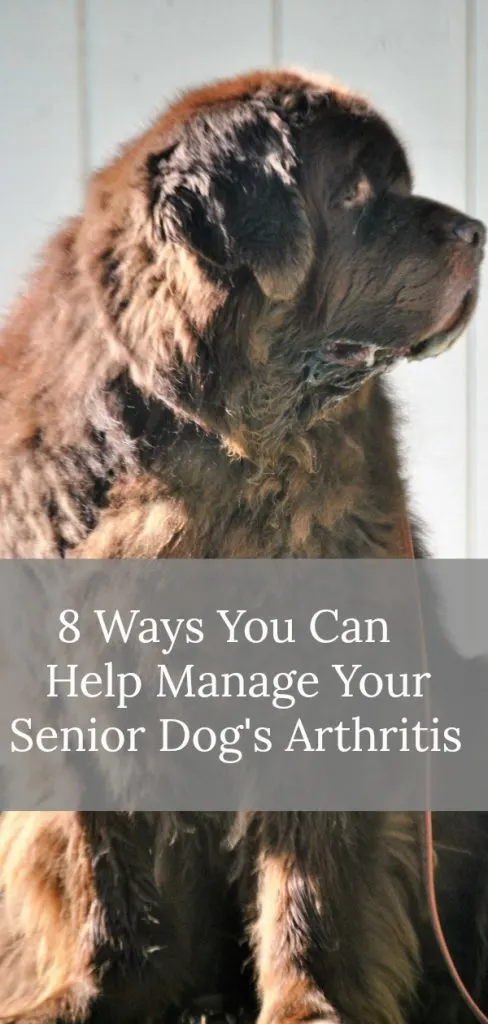
Proper Diet
A proper diet complete with omega-3 fatty acids.
Omega’s can help reduce inflammation, help limit cartilage damage and reduce the symptoms of arthritis in dogs.
Sherman is currently getting a fish based kibble diet mixed with a dehydrated raw food that is packed with omega 3’s. ALA (alpha-linolenic acid) is another omega-3 fatty acid, that is found in plant sources such as nuts and seeds.
Therapy.
Therapy has been another important part of Sherman’s arthritis maintenance. He’s done hydrotherapy, laser therapy and he is currently going through targeted pulse electromagnet therapy using a product called the Assisi Loop which we will definitely be talking more about later this month.
In a nut shell-tPEMF uses electrical energy to direct a series of magnetic pulses through injured tissue whereby each magnetic pulse induces a tiny electrical signal that stimulates cellular repair and can reduce pain and inflammation.
We are using the Assisi Loop right now up to 3 times a day with Sherman.
Pain Medication.
While Sherman’s osteoarthritis doesn’t require daily or even weekly pain management he does sometimes have bad days where he limps a bit more or is more reluctant to move. On days like this, he gets an NSAID (nonsteroidal anti-inflammatory).
I’m not a person who is afraid of giving my dog NSAID’s. If he’s in pain and struggling he gets one.
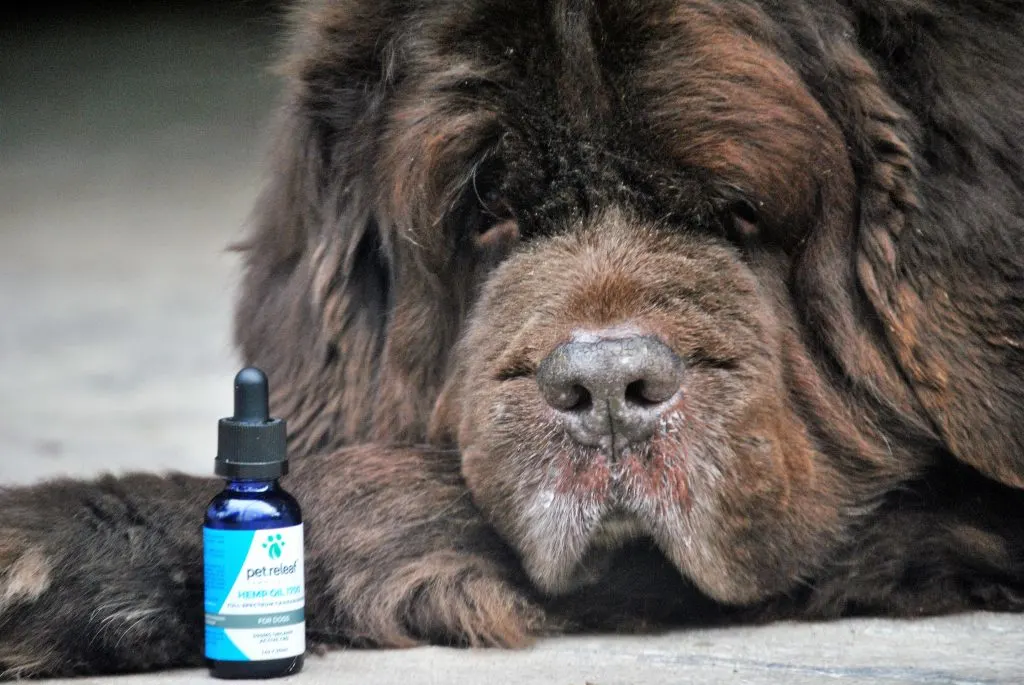
CBD/Hemp Oil.
Many studies show that cannabinoids have anti-inflammatory effects and can help with pain, tumors, seizures, muscle spasms, skin conditions, appetite stimulation, aggression, anxiety, and neurological disorders in dogs.
More Approaches.
Other approaches to treating canine osteoarthritis that we haven’t explored are acupuncture which I’ve heard some people rave about, swimming-which is such a great low impact exercise but unfortunately I have a Newf that doesn’t like to swim.
Surgery-we opted out of this one but many dogs have had great luck with a surgical approach. You can also look into getting a dog ramp or steps to make it easier for them to get in the car. If your dog is struggling to get up you can look into getting a harness or Toe Grips.
Managing canine osteoarthritis is a full-time commitment that can be managed in most dogs by combining medical and non-medical approaches.
These approaches can minimize pain, increase mobility, slow down the degeneration of joints and even help with cartilage repair. Osteoarthritis is not a death sentence for our dogs like it once was but you need to be a responsible owner and be on top of it.
If your dog is suffering from osteoarthritis speak to your vet to see what type of options are available for them. Your dog will thank you.
*This post contains affiliate links.
Rebecca C
Monday 31st of October 2022
Thanks for this article. Our bronze Newfie mix will be 7 in a few months and he has been slowing down this past year, and now we fear serious arthritis in his front legs based on signs and symptoms in this article and others. It came on so suddenly; one day for no reason he was limping badly and we have to take our best buddy on short, slow walks now. We will get him to his vet for a full workup ASAP. My heart is breaking for my ChooChooBear.
Hazel Owens
Wednesday 11th of May 2016
I agree that keeping your senior dog active is important to their health. While you don't want to wear them out too much, keeping your dog moving will help prevent them from getting stiff and sore. Going on occasional walks and even joining other therapy programs can help keep your dog limber as they grow older. Thanks for the article.
Veronica Marks
Wednesday 9th of December 2015
It's so interesting how the same things that help us with joint problems and arthritis are the things that help dogs with the same! I actually hadn't heard of massage for dogs before, so that was a surprise to see on your list. I will have to talk to my vet about that next time we are there. Thanks!
Vets in Cheshire
Friday 25th of September 2015
Sound like you've managed this situation pretty well to me. Some good advice, sound like he's doing ok and long may it continue!
2 Brown Dawgs
Friday 11th of September 2015
These are some great things to think about with our senior dogs. We do use a supplement (it is not just for joints) and I think it has really helped with overall energy as well as creakiness.